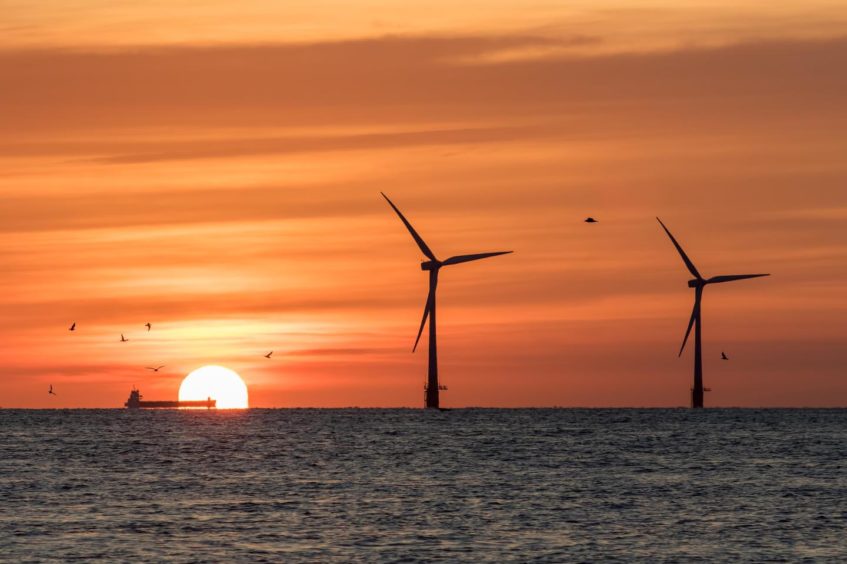
Offshore wind developers have been praised for the “time, effort and investment” they’ve put into their ScotWind applications.
The landmark leasing process, Scotland’s first in over 10 years, stopped taking submissions at 5pm on Friday, July 16 after more than six months.
Dozens of energy companies have lodged bids with Crown Estate Scotland, the organisers of ScotWind.
Further details about the general level of interest and next steps will be published next week.
The results are expected to be released in earl 2022.
ScotWind is the launch pad for Scotland’s next generation of offshore wind farms.
Companies are competing for more than a dozen plots of seabed around the Scottish coast that can be used to accommodate offshore renewables developments.
The Scottish Government has a target to scale up offshore wind capacity to 11 gigawatts by the end of the decade.
Some of the world’s largest energy companies are competing to gain a strong foothold in the Scottish offshore wind market, including BP, Shell and ENI.
A lot of the attention has been on the capacity for floating wind – a relatively new but fundamental technology – to be a cornerstone of the latest leasing round.
And the signs are positive, with several companies, such as Orsted and Ocean Winds, lodging floating bids.
It’s now up to CES to begin the process of examining each application before choosing companies to deliver on Scotland’s energy transition ambitions.
Colin Palmer, director of marine for Crown Estate Scotland, said: “We really appreciate and acknowledge all the time, effort and investment that has gone into each and every application to ScotWind Leasing.
“We know that there is significant interest in Scotland’s ability to host major offshore wind projects, and our engagement with the sector throughout the development of ScotWind has been clear evidence of that.
“We’ll now look forward to the next stage in the journey, and beginning the work of assessing applications and, ultimately, awarding agreements that can help move some of these exciting potential projects closer to reality.”
The appetite amongst energy companies, particularly those with a rich oil and gas heritage, to diversify their portfolios has come to the fore this year.
In the Crown Estate leasing round in England and Wales in February, BP paid £900 million alongside EnBW to secure entry to the UK offshore wind market.
Despite the jaw dropping fees, CES opted to stick with its maximum bid threshold, although increased it ten-fold to £100,000 per square kilometre of seabed.
Nevertheless, ScotWind will unlock billions of pounds worth of investment, while also providing a steady stream of work for ports and harbours around the country.
Moreover, it will increase the capacity of the offshore wind sector to absorb oil and gas jobs in the future.
Ben Miller, senior policy manager at Scottish Renewables, said: “Offshore wind developers from across the world have recognised Scotland’s renewables potential, and have worked incredibly hard in challenging times to be able to submit their project bids today.
“This is a huge year for Scotland, with COP26 coming to Glasgow, and the outcome of this process will confirm our ambition to be a world leader in deploying new offshore wind technologies.
“We look forward to the leasing results, and for the further expansion of an industry which is already creating major economic and environmental benefits right across the country.”
Recommended for you

